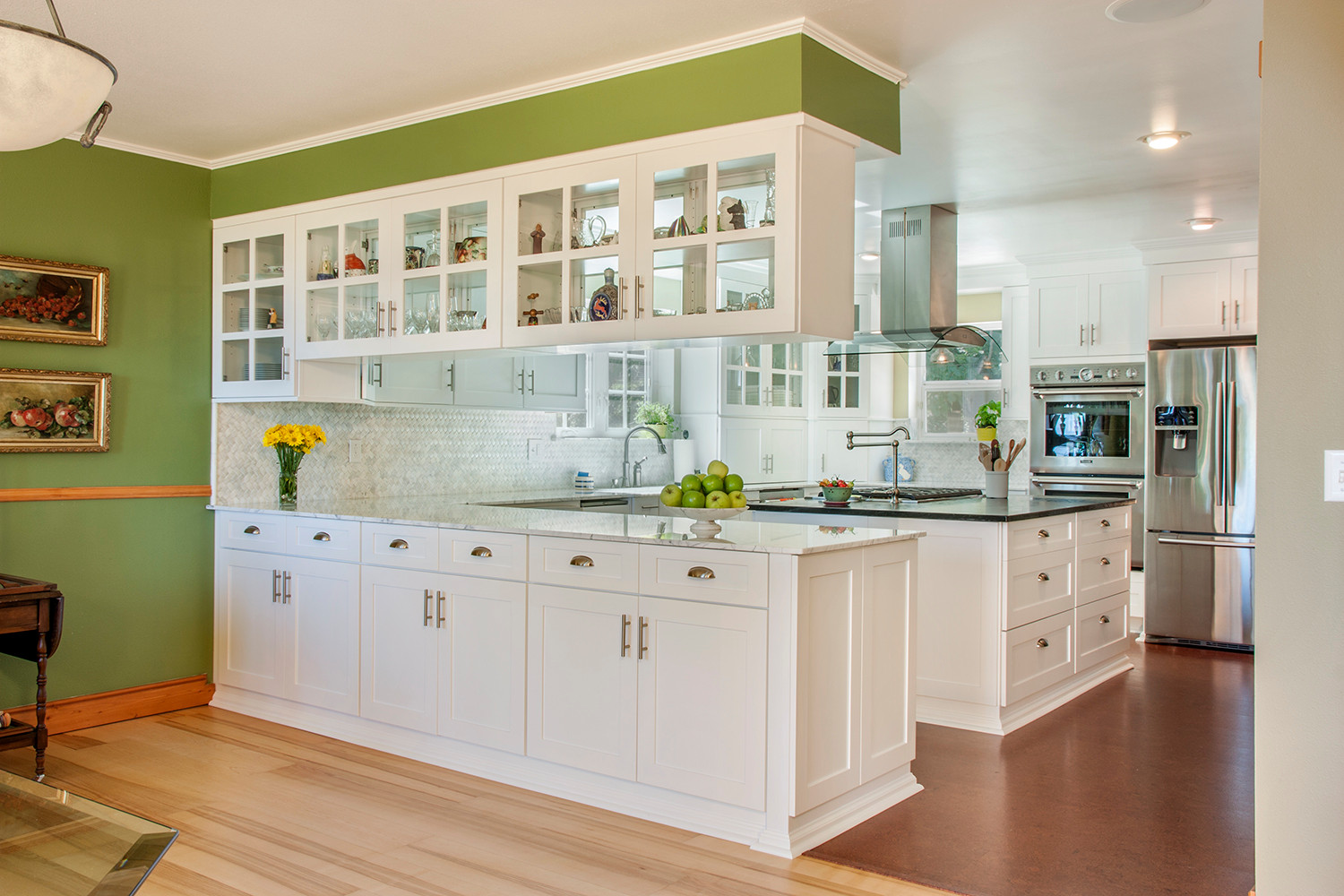-
Table of Contents
“Design your dream gym at home and elevate your fitness journey with these expert tips.”
Designing a home gym can be an exciting and rewarding project for fitness enthusiasts. Having a dedicated space for workouts allows for convenience, privacy, and the ability to customize the equipment and layout to suit individual needs. However, creating an effective and functional home gym requires careful planning and consideration. In this article, we will provide some valuable tips to help fitness enthusiasts design their ideal home gym, ensuring a space that promotes motivation, efficiency, and success in achieving fitness goals.
Essential Equipment for Designing a Home Gym
Designing a Home Gym: Tips for Fitness Enthusiasts
Creating a home gym is a dream come true for many fitness enthusiasts. It offers convenience, privacy, and the ability to work out on your own terms. However, designing a home gym can be a daunting task, especially if you’re unsure of what equipment to include. In this article, we will discuss the essential equipment for designing a home gym, ensuring that you have everything you need to achieve your fitness goals.
First and foremost, a good quality cardio machine is a must-have for any home gym. Whether it’s a treadmill, stationary bike, or elliptical trainer, cardio equipment is essential for getting your heart rate up and burning calories. It’s important to choose a machine that suits your fitness level and preferences. If you enjoy running, a treadmill might be the best option for you. On the other hand, if you have joint issues, an elliptical trainer might be a better choice as it provides a low-impact workout.
In addition to cardio equipment, strength training equipment is crucial for building muscle and toning your body. A set of dumbbells or resistance bands is a versatile and cost-effective option for strength training. They allow you to perform a wide range of exercises targeting different muscle groups. If you have more space and budget, investing in a weight bench and a set of barbells can take your strength training to the next level.
To complement your cardio and strength training, including a yoga mat and some basic yoga props is a great idea. Yoga not only improves flexibility and balance but also helps reduce stress and promote relaxation. With a yoga mat, you can comfortably practice various yoga poses and stretches in the comfort of your home gym. Additionally, having a stability ball can add an extra challenge to your workouts and improve core strength.
Another essential equipment for a home gym is a full-length mirror. A mirror not only serves as a functional tool for checking your form during exercises but also creates an illusion of a larger space. It can make your home gym feel more open and inviting, motivating you to work out more frequently. Additionally, having a mirror allows you to monitor your progress and see the changes in your body over time.
Lastly, don’t forget about storage and organization. Keeping your home gym tidy and clutter-free is essential for creating a conducive workout environment. Invest in storage solutions such as shelves, bins, or racks to keep your equipment organized and easily accessible. This will not only save you time but also prevent accidents and injuries caused by tripping over equipment.
In conclusion, designing a home gym requires careful consideration of the essential equipment needed to achieve your fitness goals. Cardio machines, strength training equipment, yoga props, a full-length mirror, and storage solutions are all crucial components of a well-equipped home gym. By investing in these items, you can create a space that is convenient, motivating, and tailored to your fitness needs. So, get started on designing your dream home gym and enjoy the benefits of working out in the comfort of your own home.
Space Optimization Tips for Designing a Home Gym
Designing a Home Gym: Tips for Fitness Enthusiasts
Creating a home gym is a dream come true for many fitness enthusiasts. It offers convenience, privacy, and the ability to work out at any time. However, designing a home gym can be a challenging task, especially when it comes to optimizing the available space. In this section, we will provide you with some valuable tips on how to make the most of your space when designing a home gym.
First and foremost, it is essential to assess the available space and determine how much room you have to work with. Whether you have a spare room, a basement, or even just a corner of a room, understanding the dimensions and limitations of your space is crucial. This will help you plan the layout and choose the right equipment that fits comfortably within the designated area.
Once you have a clear understanding of your space, it’s time to prioritize your fitness goals and decide which equipment is essential for your workouts. Consider the types of exercises you enjoy and the equipment required to perform them. For example, if you are into strength training, you may need a weight bench, dumbbells, and a squat rack. On the other hand, if you prefer cardio workouts, a treadmill or stationary bike might be more suitable. By focusing on your specific fitness needs, you can avoid cluttering your gym with unnecessary equipment.
Another space optimization tip is to invest in multi-functional equipment. This type of equipment allows you to perform a variety of exercises without taking up too much space. For instance, adjustable dumbbells can replace an entire set of individual weights, while resistance bands can provide a full-body workout in a compact form. Additionally, consider purchasing a foldable treadmill or a wall-mounted pull-up bar to save space when not in use.
Storage is another crucial aspect of space optimization in a home gym. Keeping your equipment organized and easily accessible will not only maximize your space but also enhance your overall workout experience. Install shelves, hooks, or racks to store smaller items like dumbbells, resistance bands, and yoga mats. Utilize wall space to hang larger equipment such as stability balls or foam rollers. By having a designated storage area for each item, you can avoid clutter and create a more functional and visually appealing gym environment.
Furthermore, don’t forget to consider the flooring in your home gym. Opt for durable and easy-to-clean materials that can withstand the wear and tear of your workouts. Rubber flooring or interlocking foam tiles are excellent choices as they provide cushioning, reduce noise, and protect your existing flooring from damage. Additionally, consider adding mirrors to your gym walls. Mirrors not only create the illusion of a larger space but also allow you to monitor your form and technique during exercises.
Lastly, lighting and ventilation are essential factors to consider when designing a home gym. Natural light can create an inviting and energizing atmosphere, so try to position your gym near a window if possible. If natural light is limited, invest in bright, adjustable lighting fixtures to ensure proper visibility during workouts. Adequate ventilation is also crucial to maintain a comfortable and odor-free environment. Consider installing a fan or air conditioning system to keep the air circulating and prevent excessive heat buildup.
In conclusion, designing a home gym requires careful planning and consideration, especially when it comes to optimizing the available space. By assessing your space, prioritizing your fitness goals, investing in multi-functional equipment, organizing storage, choosing the right flooring, and ensuring proper lighting and ventilation, you can create a functional and enjoyable workout space in the comfort of your own home. So, get ready to break a sweat and achieve your fitness goals without ever leaving your doorstep!
Designing a Home Gym on a Budget
Designing a Home Gym: Tips for Fitness Enthusiasts
Designing a home gym can be an exciting project for fitness enthusiasts. It allows you to create a space that is tailored to your specific workout needs and preferences. However, the cost of setting up a home gym can quickly add up, making it seem like an unattainable dream for those on a budget. But fear not! With some careful planning and smart choices, you can design a home gym that fits your budget without compromising on quality.
The first step in designing a home gym on a budget is to assess your needs and prioritize your fitness goals. Consider the types of exercises you enjoy and the equipment you need to achieve them. This will help you avoid unnecessary purchases and focus on the essentials. For example, if you primarily enjoy cardio workouts, investing in a good quality treadmill or stationary bike might be a wise choice. On the other hand, if strength training is your main focus, a set of dumbbells or resistance bands could be more suitable.
Once you have identified your fitness needs, it’s time to start looking for affordable equipment options. One great way to save money is to buy used equipment. Many people sell their lightly used exercise equipment at a fraction of the original price. Check online marketplaces, local classifieds, and garage sales for deals on treadmills, ellipticals, and weightlifting equipment. Just make sure to thoroughly inspect the equipment before purchasing to ensure it is in good working condition.
Another cost-saving option is to consider multi-purpose equipment. Instead of buying separate machines for different exercises, look for versatile equipment that can be used for multiple workouts. For example, a stability ball can be used for core exercises, balance training, and stretching. Adjustable dumbbells are another great investment as they allow you to change the weight according to your needs, eliminating the need for multiple sets of dumbbells.
In addition to equipment, consider the layout and design of your home gym. Optimize the available space by organizing your equipment efficiently. Wall-mounted storage racks or shelves can help keep your workout area tidy and maximize floor space. Mirrors can also be a valuable addition, as they create the illusion of a larger space and allow you to check your form during exercises.
When it comes to flooring, you don’t have to splurge on expensive options. Look for affordable alternatives such as interlocking foam tiles or rubber mats. These provide cushioning and protect your floors from damage without breaking the bank. Additionally, consider adding some motivational elements to your home gym, such as posters or quotes that inspire you to stay committed to your fitness journey.
Lastly, don’t forget about safety. Invest in a good quality exercise mat to prevent injuries during floor exercises. Ensure that your equipment is stable and secure, especially if you are using heavy weights. If you are unsure about proper form or technique, consider consulting a personal trainer or fitness professional to avoid injuries and get the most out of your workouts.
Designing a home gym on a budget is entirely possible with some careful planning and smart choices. By assessing your needs, buying used equipment, considering multi-purpose options, optimizing space, and prioritizing safety, you can create a functional and affordable home gym that helps you achieve your fitness goals. So, get started on designing your dream home gym and enjoy the convenience and comfort of working out in the comfort of your own home.
Conclusion
In conclusion, designing a home gym requires careful planning and consideration for fitness enthusiasts. Some key tips to keep in mind include determining the available space, selecting the right equipment based on individual fitness goals, ensuring proper ventilation and lighting, incorporating storage solutions, and creating a motivating and inspiring environment. By following these tips, fitness enthusiasts can create a functional and personalized home gym that supports their fitness journey.




